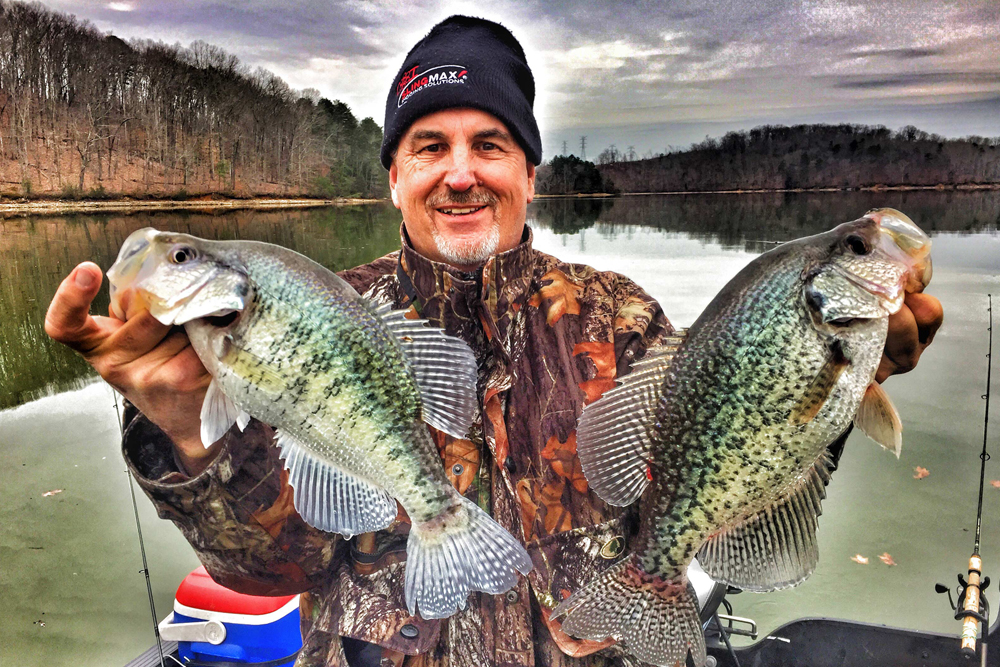Ed McCoy shows off two good reasons it might never be too early to start longline trolling for pre-spawn
crappie – at least anywhere the water isn’t frozen. (Photo: Richard Simms, CrappieNOW Editor)
Crappie Basics: Time to Think Longlines
by Richard Simms, CrappieNOW Editor
Longlining for crappie is one of the best ways possible to locate concentrations of fish, especially during the “pre-spawn” period. Typically, most Southern anglers consider the best pre-spawn time is in February or March, even earlier the farther south you go.
But anywhere the water isn’t frozen, it is really never too early to start longlining.
Basically, anglers slow troll (0.5 – 1 mph) with four-to-eight rods with small jigs cast well back from the boat (60 – 120 feet) on four-to-six-pound test line. Initially some anglers use different size jigs – 1/8th, 1/16th and 1/32nd – to cover a range of depths. If one depth begins working best put the same jig size on all rods.
Anglers often use extra-long crappie poles to allow them to spread their lures widely, or use planer boards, especially in shallow water. But longliners are often trolling deeper, open water searching for crappie that are following schools of bait.
The more line that goes out, the deeper the jigs will go. It is important to be consistent once you establish a pattern.
Crappie are slow-moving fish, especially in the winter. Trolling very slow is critical. In the winter anything 1 mph or above is probably too fast.
Here is a video sample from CrappieNOW Editor Richard Simms.


